QuestionQUESTION: We have a 25 gallon tank with a hang on filter. The tank has been established since late December. The temperature is about 74ish right now, but unfortunately I'm out of stuff to check our ammonia and nitrate readings.
We have two mickey mouse platies, a male and female guppy, two harlequin rasboras, an algae eater, and our two mollies (the fish in question).
The other night I noticed our dalmatian molly (Rosalie) follwing (i.e. really pestering the heck out of) the black molly (Cheryl). After some Googling and much to my chagrin we discovered Rosalie is in fact male and Cheryl female. Oops. I figured nature would take its course and let them be.
The next morning I noticed two very unusual things. Cheryl now has a split tail. It doesn't look like other tail bite injuries I've seen because it's a perfectly removed section of tail straight down the middle. It looks like a forked tail. She's swimming fine and eating but I found it very unusual.
Rosalie I'm more worried about. It appears his mouth is paralyzed. His lips are puckered out the way fish do sometimes, but he isn't bringing them back in. They're just stuck straight out and slightly open. I watched him closely tonight and I don't think he's able to eat. I also tried to get a picture to attach, and Rosalie is usually a very gregarious and curious fish that will swim right up to the glass to see who's admiring him, but tonight he keeps hiding...I tried for 30 minutes and finally gave up worrying that I was stressing him. He's staying near the top of the tank as well. I would have thought something like chlorine shock (we did a 25% water change on Sunday) but all the other fish are fine.
Is there anything I can do for them? I'm not sure if this was a breeding related scuffle and they need to be separated or what to do for either of them but I'm worried because they're my personal favorites.
ANSWER: Hi Leslie,
Testing your water for ammonia, nitrites and nitrates should always be the first step when you notice oddities with your fish. This is because 99% of all issues are directly related to the results of your water tests.
The split tail could have been caused not by disease but by the female molly trying to get away from the male chasing her and she ripped it on a plant or ornament. This is not uncommon. For this reason it is recommended that you keep all livebearers like platies, mollies, guppies and swordtails in groups of 2 females to 1 male because 1 on 1 will pester unrelentlessly and can stress out the female and also cause illness and even death. I've seen this many times when female livebearers die for no apparent reason under perfect water conditions. However, that being said if you have males and females together they will breed like rabbits and will produce 20-60 new baby fry each month until the end of time. This is exactly why some people choose to keep female livebearers together only (all males will fight).
To treat the molly tail, I would simply add 1 tsp. per 5 gallons of water of aquarium salt and the recommended dose of Melafix. The salt will reduce stress, and in fact, should always be dosed in new water you add to your aquarium when you have mollies because it aids in their slime coat production. You don't have any fish that are salt intolerable (like tetras) so I would make sure that you regularly keep the aqua salt in the tank for the benefit of all of your livebearers. You only add it to the whole tank for the first time and then to the partial water changes as you do them. Melafix is an all natural anti-bacterial and will help heal her tail and prevent it from becoming infected. Because it's all natural it won't hurt your other fish.
For your male molly with the open mouth this is usually caused by either toxic water, an ulcer in the mouth, parasites or a rock in the mouth. I have had the latter happen with my larger goldfish when they are rooting on the bottom for food (as mollies also do) and they intake a piece of gravel that gets stuck. You will need to look inside of his mouth to see if this is the case. If so you can remove it easily by catching the fish and holding him right under the water's surface and using tweezers to remove the gravel with your other hand. It is a little difficult but you can do it.
We won't know if the cause is toxic water until you test it so I really can't give you any advice on how to fix that until we know what it is but this can also cause this behavior.
It can be from an ulcer in the mouth. The salt and Melafix should take care of this if this is the case. You really won't know though until you rule out the gravel and the toxic water and treat the tank with the salt and Melafix and watch his behavior for improvement.
Finally, it could be parasites. Flukes will almost always cause this behavior. If you suspect flukes he could also be suffering from an ulcer from the flukes, swelling of his gills, paleness, whiteness around the gills, and flashing (darting about). These are seriously advanced if this is the case and need to be treated immediately with a medication from the local pet store specifically for flukes. I like Mardel's Coppersafe. However, if this is the problem the fish needs to be secluded for treatment, you don't want to treat healthy fish with Coppersafe. You will need a hospital tank. This can be as simple and cheap as a clear plastic rubbermaid of 10 gallons with a cheapy hang on filter and cheapy heater. These are great to have on hand when fish get sick or you want to run a separate tank for baby fry and they are inexpensive to set up and maintain. You should use some water from the main tank (provided you have 0 ammonia, 0 nitrite and 5-20 ppm nitrate), some gravel and some plants also from the main tank to make it feel like home. Treat him with the Coppersafe and hold off on all foods for 4-5 days while you treat.
You can cut down some of the aggression by adding another female molly or having a densely planted tank with plenty of caves and hiding places so she can get away if need be.
The one thing you mentioned that caught my attention was 'chlorine shock'. Are you not using a water conditioner when you do partial water changes? You should ALWAYS be using a conditioner in your water, like Seachem's Prime, that strips out the chlorine and chloramine. If you aren't doing this the fish will die from the chlorine and your ammonia and nitrites will spike because each time you add new water that hasn't been detoxed it will kill any beneficial bacteria that you have accumulated that eats the toxic ammonia and nitrites.
Good luck : ) April M.
---------- FOLLOW-UP ----------
QUESTION: Thank you very much for the feedback. I guess this leads me to two follow-up questions. I think I'm a little confused about the aquarium salt because on the package it says it isn't removed by the filtration system so only to add it when we do water changes. I've been adding 1 teaspoon because we change out somewhere between 5 and 8 gallons at a time. However, I've seen a lot of conflicting information on the uses of aquarium salt and the amounts on different websites since so I'm curious what your opinion is.
Also as to the chlorine shock, that was a self diagnosis on my part but maybe you can catch something I didn't. My husband did a 25% water change and we conditioned the water well beforehand as always...and yes, we are using a dechlorinator. He did everything the same as always (we've never had this problem before and it hasn't happened since). About 30 minutes after the water change, all of our fish went to the top of the aquarium and started swimming around up there. It looked like they were sort of gasping with their mouths as well. They'd swim to the bottom briefly and rush right back up to the surface. I started searching around for information on why they'd all be at the top and the only thing I came across that included that symptom was chlorine shock. The site I found recommended using some Stress Coat to cure it so I went out and bought a bottle and within the hour they seemed better. I have no idea how it could have been chlorine shock because we treated the water ahead of time as always and it hasn't happened before or since...it just seemed to be a one time freak thing. If you have any other ideas on what it could have been though I'd be interested to hear them so we can keep it from happening again.
Also a quick update on our male molly this morning...he seems to have regained a little bit of movement in his mouth. He doesn't have the full range of motion yet but he seems to be doing a bit better. It sounds like I need to go get another female this weekend so we don't have more carnage.
AnswerHi Leslie,
The rule for the aquarium salt is 1 tsp. per 5 gallons of water. If you initially dosed the entire tank then you need only add salt to the partial water changes. If you are adding a new 5 gallons of water when you do a change then you would just add 1 new tsp of salt. If you think you have too much salt, then add it every other time or every third time. The most important part about it is that you have it in the tank when you keep mollies. If you decide to add some new fish down the road, like tetras, you will need to discontinue the salt usage. Not all freshwater fish are tolerant of salt. I don't think it will hurt the mollies not to have it if they are in pristine water conditions but it certainly helps.
For your water conditioner, are you using one that strips both chlorine and chloramines? If the one you use only strips chlorine this might be the problem. I like Seachem's Prime the best because it strips both. The Stress Coat might be doing the trick because it strips both chlorine and chloramines, which the latter is equally as important. I would toss the conditioner you are using if if only strips chlorine.
It could also be temp or pH shock as well. Make sure the water you replace into the tank is about the same temp. Any 4 degree swing in a 24 hour period will cause shock. Also, pH changes can cause shock. If the tank is at a 7.0 pH and the tap water is an 8.0 pH and is mixing with the old remaining water to cause a swing in pH then this can also cause an issue. I would test your tank water for pH and test it straight from the tap to see if there is a drastic difference. Fish can adapt over time to a wide range of pH but they cannot adapt to a swing in pH.
Good luck : ) April M.

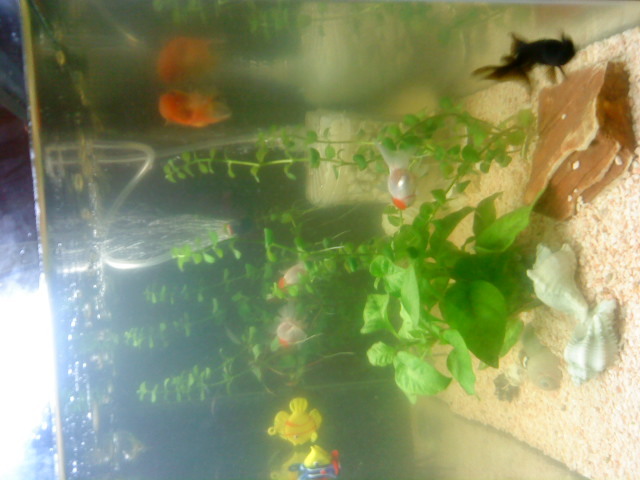 compatibility
Question
fish027
Hi Susan I have a 50litre tank
compatibility
Question
fish027
Hi Susan I have a 50litre tank
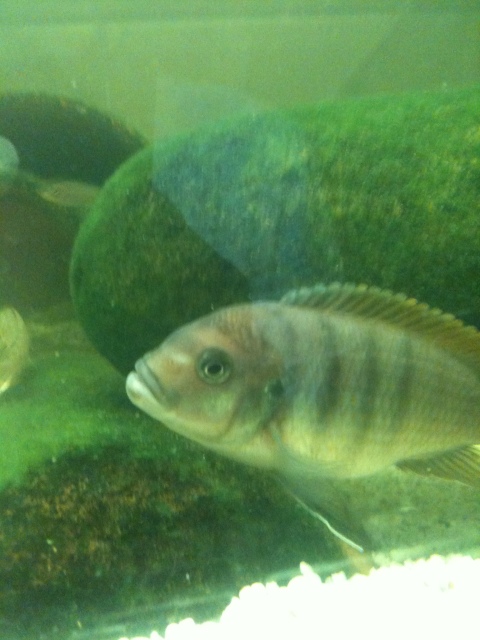 Fish I.D
Questionunknow fish
QUESTION: HI just moved into
Fish I.D
Questionunknow fish
QUESTION: HI just moved into
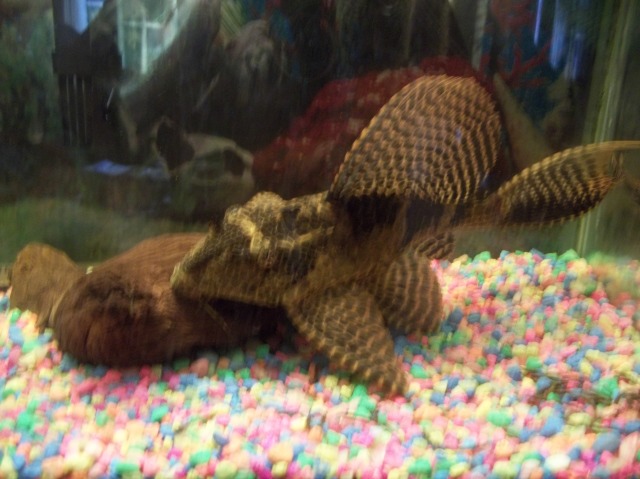 pleco
Questionpleco
QUESTION: I have a pleco. Hes abou
pleco
Questionpleco
QUESTION: I have a pleco. Hes abou
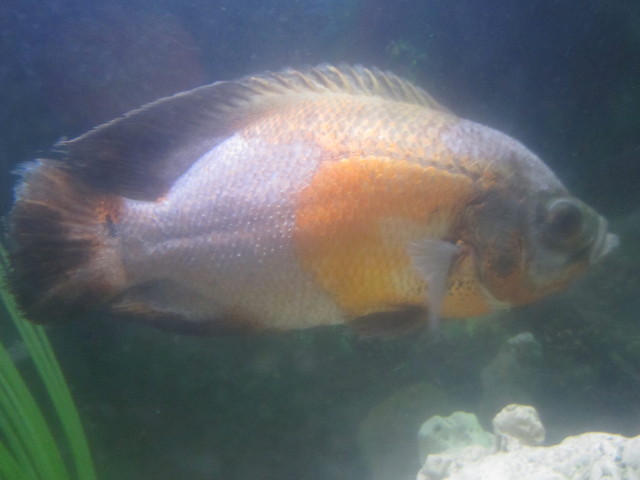 really sick tiger oscar
Question
tiger oscar
I have a tiger Oscar that seems to
really sick tiger oscar
Question
tiger oscar
I have a tiger Oscar that seems to
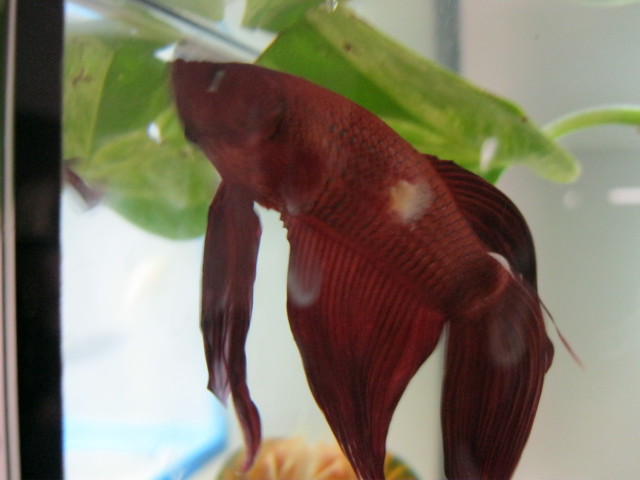 Sick Beta - open wound on side, sinking to bottom of tank
Question
Beta Fish 7 month old
I never thought I
Sick Beta - open wound on side, sinking to bottom of tank
Question
Beta Fish 7 month old
I never thought I